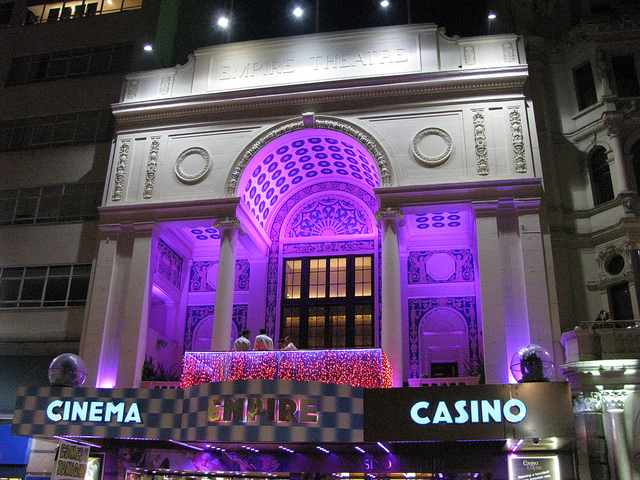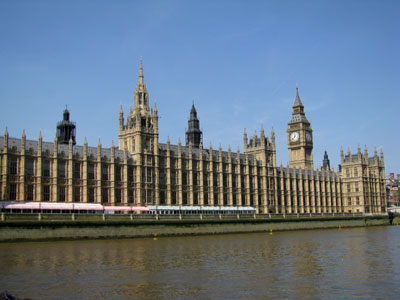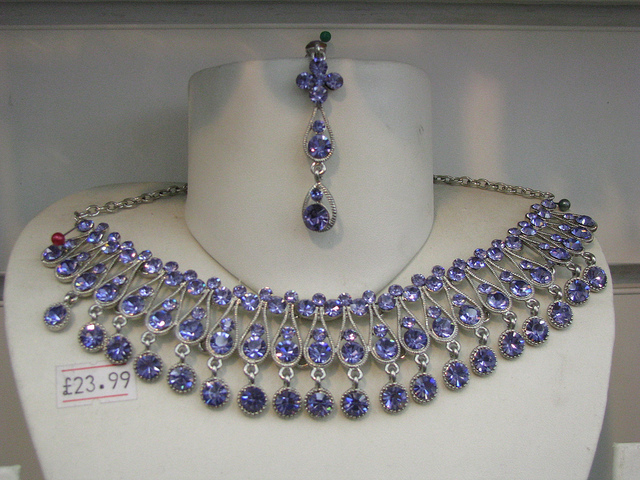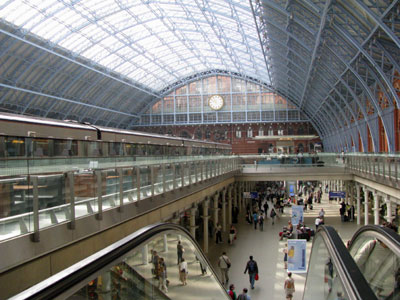After a busy morning exploring Smithfield Market, two historic train stations (St. Pancras and King’s Cross), an enjoyable stroll through the world-famous Portobello Market, an interview with one of the organizers of the Notting Hill Carnival which we followed up with a first-hand exploration of this charming neighbourhood and a brief excursion to Edgeware Road, London’s Little Beirut area, we were off to check out another London landmark: Hyde Park.

The bounty of Portobello Market
One of London’s largest parks. Hyde Park is also one of London’s Royal Parks and connected to Kensington Gardens which is considered a separate area. Together these two park areas measure a very substantial 625 acres (or 2.5 square kilometers). Hundreds of young people were sprawling out on the lawns on this warm afternoon, playing Frisbee or enjoying a picnic.

Relaxing in Hyde Park
Hyde Park was originally a private hunting ground for the Royal Family until James I permitted limited access to common people in the 16th century. In 1637 finally the park was opened to the public. The Serpentine Lake divides the park into two separate areas, and the park also features restaurants and an art gallery. Of course Hyde Park’s most famous landmark is Speakers’ Corner, an area dedicated to public speaking. Hyde Park’s Speakers’ Corner was frequented by such luminaries as Karl Marx, Vladimir Lenin and George Orwell. Much to our disappointment though, no public speech was happening today; only two older gentlemen were sitting on milk crates, quietly conferring with one another.

No big public speeches today
Across from this location is Marble Arch, a triumphal arch built of white Carrara marble dating back to 1828. It was constructed to mark Britain’s victories in the Napoleonic Wars. Its counterpart, the Wellington Arch, is located on the north side of Hyde Park. Marble Arch was originally intended to be the entrance to Buckingham Palace, but because it was too narrow to accommodate the width of some of the most opulent coaches in the 19th century it was moved to this location in the mid 1800s.

Marble Arch
Our whirlwind discoveries of London continued since I wanted to get a bit of an overview of this gigantic city. So my local expert Andrea and I headed back on the Tube and made our way to the Financial District of London. Along New York City, London is the largest international banking centre in the world. 50% of all European banking transactions are processed in London, and metropolitan London’s economy is the second largest in Europe. London’s banking sector employs more than 300,000 people. The city’s success in the service economy is evidenced by the fact that 85% of workforce in greater London are employed in service industries.

Great architecture in London
Somehow it was strange, but it occurred to me on several occasions that London reminded me more of North America than continental Europe. As a European immigrant, I have now been living for more than 20 years in North America, to be more specific in Toronto, Canada’s financial and economic centre. Over the last few years I have visited many North American cities including New York City and Chicago. For reasons I could not completely put my finger on, London just did not seem like a typical European city.

Taking the Tube to Bank Street
Maybe it was the combination of Victorian and modern architecture that is so prevalent on the west side of the Atlantic also, that reminded me of so many of the North American cities I have visited. This of course became particularly evident in the Financial District where a combination of classical buildings coexists with modern creations made of steel, glass and concrete.

Old and new side by side
Andrea and I exited at Bank Street tube station, right in the heart of London’s financial district, where Prince’s Street, Threadneedle Street, Cornhill, Lombard and King William Streets meet. Right out of the Tube station we were impressed by several major London landmarks: The Royal Exchange, the heart of London’s commerce; across the street is the Bank of England Museum. On the other side of the intersection is Mansion House, the official residence of the Lord Mayor of London. The London Stock Exchange is nearby. This area is truly the financial powerhouse of Europe.

London – Europe’s centre of high finance




